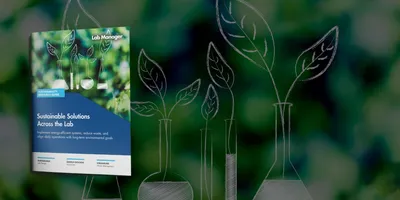“. . .Science can and should lead the world in sustainability, starting with its own footprint,” said James Connelly, CEO of lab sustainability non-profit My Green Lab, in an interview with Lab Manager. However, the industry is expressing concerns over a concept that is hindering labs from meeting their environmental goals: greenwashing.
Defining greenwashing
Greenwashing occurs when a company provides misleading or outright false information designed to portray its products as being more sustainable. While Connelly believes that greenwashing in the lab industry is often unintentional, it has grown in parallel to the demand for more sustainable lab products and practices.
Scientists who fall victim to greenwashing may inadvertently undermine their own lab’s sustainability goals. So, how can laboratory leaders recognize and avoid greenwashed products before buying them?
Recognizing signs of greenwashing
There are two ubiquitous signs of greenwashing: vague or misleading claims and a lack of credible sustainability certifications.
1. Vague or misleading claims
Ideally, companies would always pair sustainability claims with quantified data. But this is frequently not the case. Rather, companies greenwash their products by pushing the environmental benefits without offering any data to back it up. While such claims may be made in good faith based on internal estimates, it is still effectively greenwashing as the consumer cannot determine if those claims are real or not.
Data can also be easily manipulated to push a particular narrative. In a vacuum, the sustainability numbers that a company shares can be easily overstated, but once viewed in a wider context, they are truly average or even below average relative to other players in the industry or the cumulative effect.
“Scientists need to ‘trust but verify’ the claims made by their suppliers,” Connelly says. If there are no case studies, whitepapers, or other literature on their website detailing how their company is sustainability-minded or how their products have enabled labs to be greener, the company is likely greenwashing.
2. Lack of credible credentials or certifications from third parties
“Self-certification, self-disclosure, or vague ‘green’ claims without quantification or third-party verification are tell-tale signs of greenwashing,” Connelly explains. While intentions may be pure, there is, of course, an inherent conflict of interest when lab companies create their own sustainability certifications and award their own products with it. This is a gap that non-profit organizations like My Green Lab aim to fill: they act as an objective third party that independently assesses products and awards certifications, giving buyers purchasing confidence. If lab suppliers want to prioritize sustainability, pursuing third-party certification should be a non-negotiable component of their roadmap. In Connelly’s words, “Using recognized third-party standards is the most effective way to avoid greenwashing.”
The common thread running through these signs is a distinct lack of transparency. To win the trust of consumers, it is vital that lab suppliers offer objective data to corroborate their claims of sustainability.
Now, this is not to say that companies that exhibit these signs are run by bad actors or must be avoided outright. Rather, greenwashing is often a function of the field’s immaturity, and certain growing practices will help greenwashing become less prevalent. Says Connelly, “I believe [greenwashing] has more to do with the maturity of the industry than the presence of 'bad actors.” Connelly's recommendation to accurately understand the sustainability gains for a product is to conduct “a rigorous life cycle assessment comparing the baseline product with the innovation.” Connelly is hopeful that these comparative assessments will become industry standard, believing that this will “happen rapidly over the next few years” in response to public concerns and regulatory guidelines targeting greenwashing.
Lab Management Certificate
The Lab Management certificate is more than training—it’s a professional advantage.
Gain critical skills and IACET-approved CEUs that make a measurable difference.
How to avoid greenwashing
Besides third-party certifications, buyers should speak with sales representatives from potential suppliers about their environmental priorities. Ask for data, case studies, and other literature that show their products and practices are developed with sustainability at the forefront.
It may also be worth hiring a lab sustainability consultant to weigh in on these purchasing decisions and help determine the right intersection of performance, cost, and sustainability needed for the lab to reach its environmental goals without compromising research quality or throughput. If a consultant isn’t in your budget, there are many organizations and networks like My Green Lab that are dedicated to furthering lab sustainability that labs can refer to as a starting point.
While Connelly expects greenwashing to lessen as the industry matures, it still represents a challenge today for labs hoping to meet their own sustainability goals. By learning to recognize the signs of greenwashing, scientists can effectively navigate the equipment marketplace to find assets that truly align with their goals.




